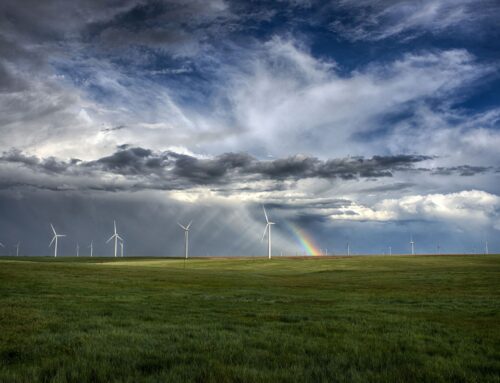Opinion: What cancellation of $1.2 billion in renewable energy infrastructure means for Al
October 10, 2025

Shortly after the federal budget bill eliminated support for renewable energy development, both Golden Valley, or GVEA, and Chugach Electric Association’s or CEA, boards of directors failed to sign term agreements for the Shovel Creek and Little Mount Susitna wind projects. Together, these would have added around 250 megawatts of renewable generation to the Railbelt and generated $1.2 billion in construction activity. By delaying these utility-scale energy projects, Alaska lost out on $600 million of federal tax credit — 50% off! — applicable to new infrastructure.
Power costs in Fairbanks are higher than in Anchorage, 15 cents vs. 13 cents per kWh, so we in Fairbanks will especially miss the low-cost wind power. But Anchorage is not far behind. Chugach Electric has already proposed a rate increase to 14.5 ¢/kWh. Electricity costs in Fairbanks and Anchorage are linked through the Railbelt Electric Grid. If one area produces a lot of wind power, everyone along the Railbelt will have access to that low-cost power.
Failure to move these utility-scale wind projects forward leaves Alaskans vulnerable to volatile and expensive LNG imports. The Shovel Creek/Little Mount Susitna projects would have nearly doubled Railbelt renewable generation, equivalent to reducing foreign Liquid Natural Gas, or LNG, dependence by 5 BCF annually. For the very limited supplies of natural gas from Cook Inlet, CEA is currently paying a price that is capped under a consent decree that was a condition of Hilcorp’s purchase of Cook Inlet assets. Hilcorp has met its contract obligations but has not expanded production in Cook Inlet. Prices for natural gas from other sources are rising sharply, and Hilcorp’s prices will also rise when the consent decree ends in 2032.
The loss of these two large wind projects has made rising energy costs inevitable for Alaskans. The Shovel Creek and Little Mount Susitna wind projects would have provided significant protection from this price escalation, both by reducing annual gas shortages but also by providing critical electrical generation during winter cold snaps. Shovel Creek gets wind when the Delta Junction site does not. Little Mount Susitna would have been built where Interior winds sweep down out of the north during cold periods in Southcentral, the periods of greatest strain on our gas supply. If Trump — with support from Republicans in Congress — hadn’t eliminated wind investment tax credits, we would be moving forward with both projects right now. Instead, both Fairbanks and Anchorage will have to rely on fossil fuels and are exposed to shortages and sharp price escalation. GVEA has even warned Fairbanksans to be prepared for rolling blackouts.
Higher energy prices and energy instability have a negative impact on all aspects of our economy. U.S. Rep. Nick Begich and Sen. Dan Sullivan were well aware of these threats, yet made little to no effort on behalf of their constituents to cut a better deal in the reconciliation process. This failure leaves Alaska families without an affordable, reliable solution for their energy needs.
When it comes to power production, we really do need “all of the above.” We need more hydro capacity, including expanding Bradley Lake. We need more distributed solar generation, and Railbelt utilities are making some progress in this area. Wind would have helped diversify our power generation and, most importantly, reduce prices. These projects may be built in the future, but the much larger price tag will be paid by Railbelt residents. Trump killed the single biggest opportunity to make Alaska’s electric grid more resilient and energy independent.
Martha Raynolds is an ecologist in Fairbanks and a member of the Fairbanks Climate Action Coalition.
• • •
The Anchorage Daily News welcomes a broad range of viewpoints. To submit a piece for consideration, email commentary(at)adn.com. Send submissions shorter than 200 words to letters@adn.com or click here to submit via any web browser. Read our full guidelines for letters and commentaries here.
Search
RECENT PRESS RELEASES
Related Post




